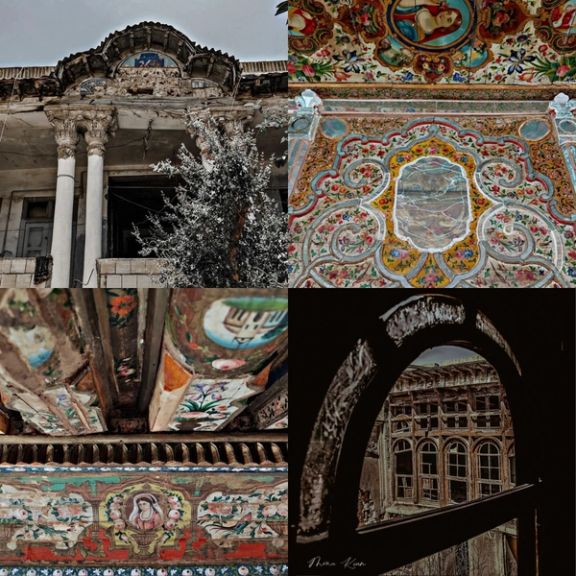Anti-Hijab Hunger-Striking Prisoner Released
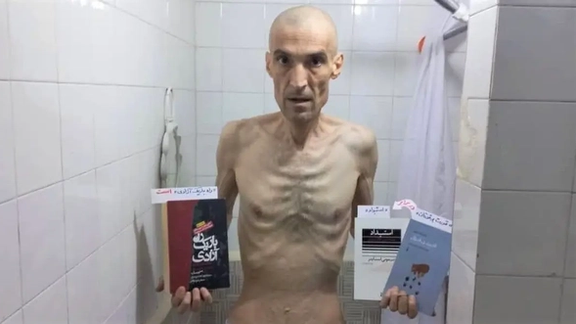
Iranian political prisoner Farhad Meysami, whose photos after long and repeated hunger strikes shocked the world earlier, has been freed after more than four years in detention.

Iranian political prisoner Farhad Meysami, whose photos after long and repeated hunger strikes shocked the world earlier, has been freed after more than four years in detention.
Social media exploded after photos of Meysami along with his letter from Rajaei-Shahr prison in Karaj were published on social media on February 1, showing him in a horrible state after losing almost half his body weight. Himself a physician, Meysami had announced he would not stop his strike.
Many Iranian dissident figures and foreign officials expressed outrage and concern over his deteriorating health condition.
According to his lawyer, the 53-year-old prisoner of conscience, who has been in jail since 2018 for supporting women activists protesting against the mandatory Islamic dress code – or hijab -- began his hunger strike on October 7 to protest recent government killings of demonstrators.
In his letter from prison, Maysami announced that he plans to make the water he drinks bitter for the next 10 days as a symbolic move against "these times that are more bitter than poison." He held the Iranian government creating unbearable condition for "everyone in all aspects".
The political activist also wrote that “I will still insist on my three demands of stopping the execution of protesters, releasing six political-civil prisoners, and stopping forced-hijab harassment.” "I will continue my impossible mission in the hope that it may become possible later on with a collective effort,” he wrote. The title of the political activist's letter is "For the days of suffering and suffering and suffering".

While many Iranian hardliners deny the damaging impact of protests for the regime, others now claim that the unrest has strengthened the Islamic Republic.
Conservative lawmaker Behrouz Mohebbi has claimed the protests revealed the weakness of the opposition. In an interview he said that the Iranian opposition is not powerful and influential because of the discord in its ranks. Meanwhile, the opposition does not have a leader the regime's serious critics would accept.
He further claimed that there is no alternative to the Islamic Republic, and its opposition is not capable of paving the way for democracy in Iran. Mohebbi also added that the Iranian public did not take the opposition seriously.
"The opposition has no acceptable track record. On the other hand, the cultural and political celebrities who opposed the regime have been unmasked during the past months," he said.
The emergence of opposition figures in the diaspora since protests began in September, is a new phenomenon on the Iranian political landscape, as gradually they can coalesce and present a more formidable challenge to the clerical regime.
At the same time, former regime insiders such as ex-prime minister and Green Movement leader Mir-Hossein Mousavi and others made strong public statements this month challenging the regime and demanding a referendum.
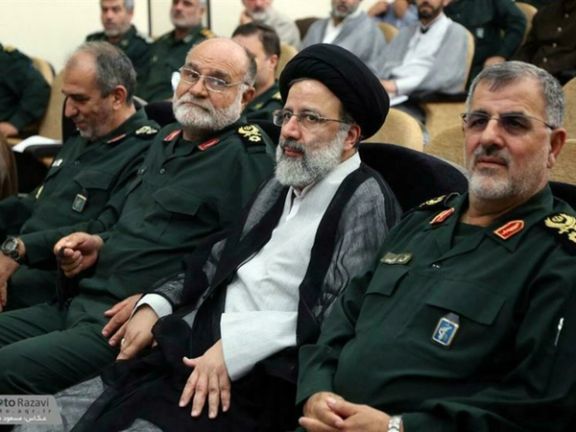
Meanwhile, some ask if the protest will empower radical elements in the regime. The fact is that radicals are already in power and even if they increase their influence, it can play into the hands of the opposition and expand the protests.
According to Rouydad24 website in Tehran, protesters demanding an end to the Islamic Republic created the most important challenge for the Islamic Republic since 1979, giving rise to the assumption that the so-called theocratic government in Iran could collapse as the monarchy did 44 years ago.
The report, however, acknowledged that for the time being the Islamic Republic has still the upper hand in the confrontation with the people as a result of the repressive measures taken by security forces, but maintained that the people's anger and the worsening economic situation in Iran will inevitably lead to more protests.
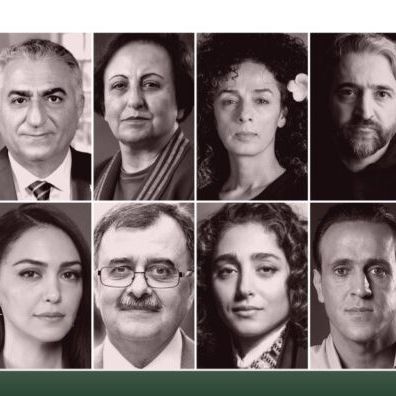
The report added: "The situation is so volatile that even many regime insiders have separated their path from the government. Some top clerics in Qom and An-Najaf and even some military officials have criticized the circle around President Ebrahim Raisi. Even some hardliner news agencies openly criticize Raisi for his economic mismanagement and former insiders, such as ex-President Mohammad Khatami and former Parliamentary Speaker Ali Larijani have condemned the violent crackdown. Yet, there is no indication that anyone in the regime has listened to their complaints."
The report quoted Reza Nasr, a professor of Political Science at Johns Hopkins University, as having said in an article in the Foreign Policy magazine, "Since the start of the crisis, hard-liners have tightened their grip on the reins of power. This faction opposes engagement with the West and does not wish to return to the 2015 nuclear deal. At home, it favors isolationism and tight control of the social and political spheres. Abroad, it favors aggressive regional policies and increasing collaboration with Russia. Far from chastened by the protests, in other words, the regime that is now emerging from the initial phase of the unrest is even more intransigent and potentially aggressive than ever before."
Despite evidence of hardliners having the upper hand for the time being, Expediency Council member Mohammad Javad Bahonar has argued that the protests are deeper and more widespread than in the past five years and that even some of the supporters of the regime have their own grievances and complaints. Meanwhile, former lawmaker and international wrestling champion Amir Reza Khadem has saidthat "Nearly 100 percent of Iranian are unhappy about the current situation. Even the grey strata of the Iranian society, the silent majority, sympathizes with the protests."
Responding to Iranian conservatives' criticism of celebrities' intervention in political affairs, Khadem said that "Celebrities understand the society better than government officials."
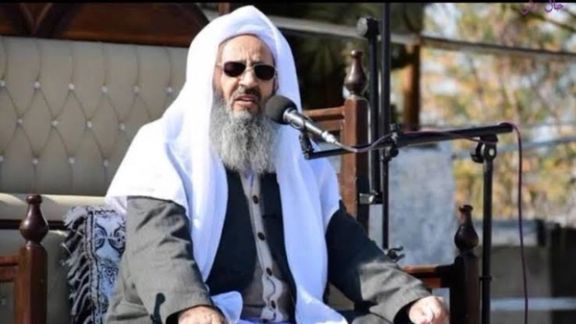
Reactions are still pouring in to the proposal by Iran’s former premier-cum-opposition figure Mir-Hossein Mousavi for constitutional change through a referendum that could end in regime change.
In comments on Thursday, outspoken Sunni religious leader Mowlavi Abdolhamid praised Mousavi’s proposal and described it as the result of his understanding about the realities of society, demanding that other politicians see these realities.
“With his recent statement, Mousavi showed that he understood the realities of society. It's time for other politicians and ulema (religious scholars) to think about saving the country and see the facts,” he said. In November, the top Sunni cleric himself had called for an internationally monitored plebiscite, saying that by killing and repression the government cannot push back a nation.
Abdolhamid also criticized over a decade of house arrest imposed on Mousavi, his wife Zahra Rahnavard, and Former Parliament Speaker Mehdi Karroubi, calling it an example of the Islamic Republic’s injustice.
Mousavi and Karroubi both were presidential candidates in 2009, when a highly disputed vote count gave the presidency to Mahmoud Ahmadinejad triggering large popular protests that became known as the Green Movement. Eventually, both Mousavi and Karroubi were put under house arrest in 2011.

Referring to the regime’s violent crackdown on protesters, Mousavi said in his statement that such events have “demonstrated major truths for the nation.” The rulers of the Islamic Republic are not willing “to take the smallest step to meet the demands of the people.” Iran needs a“fundamental change” based on “Woman, Life, Freedom” and constitutional change, he said earlier in the month.
The leader of the Green Movement is known as a staunch reformist, or someone who believes the Islamic Republic can be reformed to become a more democratic and tolerant polity. But Mousavi’s statement rejected reform as a viable alternative, urging fundamental change, a new constitution and a constitutional assembly. Although he did not openly call for regime change, but his demands, if implemented, could lead to a new and democratic political system.
Mousavi in his statement implicitly repeated what exiled Prince Reza Pahlavi has been saying for years, and other opposition activists have echoed in the past five months – transition from the Islamic Republic.
Abdolhamid who has become an outspoken critic of the regime, has stopped short of calling for a new system of government, but endorsing Mousavi’s statement clearly aligns him with political forces that believe the people should be given a chance to decide what kind of government they want.
The 2009 Green Movement leader’s rejection of the reform option in the Islamic Republic has been met with admiration and antipathy alike. Some reformists, including seven prominent political prisoners and over a dozen figures of the ‘religious intellectual movement’, and its mentor Abdolkarim Soroush, have welcomed his proposal, others have strongly rejected it. The political prisoners, including leading reformist politician, Mostafa Tajzadeh and the daughter of Iran former president Akbar Hashemi Rafsanjani, Faezeh Hashemi, who are behind bars, announced that "they will do their best to advance this proposal and a peaceful and non-violent transition to a completely democratic and developed Iranian structure."
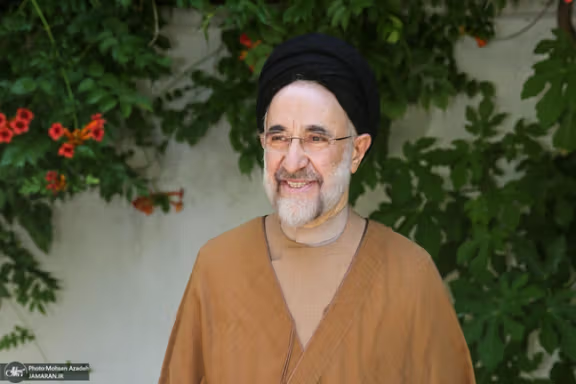
Mousavi’s volte-face can be seen as a milestone in the reformist camp as another bigwig of the movement former president Mohammad Khatami also believes reformism in Iran has reached a deadlock. Mohammad Javad Haqshenas, a prominent reformist figure, said earlier this week that Khatami's statement, which was issued on the 44th anniversary of the 1979 Islamic revolution, should be construed as a premonition for the regime that the Islamic Republic cannot be reformed.
February 11, 2023, marks the forty-fourth anniversary of the establishment of the Islamic Republic of Iran, and many people on social media believe that it is the last time the regime is celebrating the event.

Released documents show that Iran, along with Russia, China and some other authoritarian governments had access to the private data of Fabcebook users.
Internal documents in a related privacylitigation that emerged late last month have trigged the chairs of the US Senate Select Committee on Intelligence, Mark Warner and Marco Rubio, to write a letter to Meta’s Mark Zuckerberg asking fresh questions about what he and his company knew about how much user data the platform was leaking in previous years.
“It appears from these documents that Facebook has known, since at least September 2018, that hundreds of thousands of developers in countries Facebook characterized as “high-risk,” including the People’s Republic of China (PRC), had access to significant amounts of sensitive user data,” they write.
In the so-called "Cambridge Analytica" scandal, Facebook clearly violated the privacy of its users, allowing developers to access their private data without their consent.
An employee of Facebook’s consulting company Cambridge Analytica revealed information that led to its founder Mark Zucherberg being hauled in front of Congress and finally paid a $5 billion settlement over ‘privacy lapses’.
The Islamic Republic of Iran has a long history of abusing social media platforms to advance its policies.
Iranian activists in 2022 accused Instagram that its moderators were blocking posts critical of the regime. A former employee of a German company working for Instagram said the Iranian security apparatus offered to pay him money in exchange for blocking some accounts.

Iran’s foreign minister says no journalist was arrested during the past five months of protests, claiming that "We cannot confirm the detention of journalists in Iran.”
Hossein Amir-Abdollahian stated in an interview with National Public Radio in the United States on Wednesday that “It's very easy to relabel the person who has been detained. You could, at any moment, call that person in question a defendant of human rights, a journalist, among others.”
Numerous reports by human rights groups, activists and media have said that at least 60 Iranian journalists were arrested since late September, and many are still behind bars.
He once again blamed the West for staging the protests following the death in custody of Mahsa Amini saying that they “carefully” and “meticulously” targeted the “riots”.
He also alleged that no students were detained at the universities or premises of the universities during the riots, while not only many were arrested but some were even killed during protests. Hundreds of Iranian professors demanded the release of students in November.
Referring to the recent release of prisoners after Supreme Leader Ali Khamenei’s pardon, Amir-Abdollahian claimed Khamenei pays special attention to the issue of clemency. Khamenei’s partial pardon came after thousands of people were arrested and kept behind bars for months without due process of law.
Elsewhere in his remarks, Amir-Abdollahian asserted that there is democracy in Iran and people can freely voice their views.
Two journalists, Niloufar Hamedi and Elaheh Mohammadi, who had reported Mahsa Amini’s death have been in prison for more than 100 days.
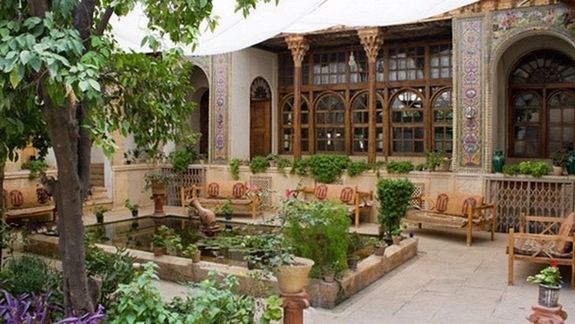
The government’s plans to demolish tens of historic houses in the ancient city of Shiraz to expand Shia shrines has outraged many Iranians.
Media reported earlier this week that residents of the historic houses marked for demolition in the vicinity of the shrines have been given an ultimatum by the authorities and the municipality’s contractor to evacuate immediately as the demolition work was soon to begin. Several of these houses which date back to Zand (1751-1779) and Qajar (1789-1925) periods have been listed as national heritage sites.
The plan to expand the Shah-e Cheragh shrine is meant to transform Shiraz from a destination for historic tourism to a pilgrimage destination, Mohammadreza Javadi-Yeganeh, a professor of sociology at Tehran University tweeted. “[They are] targeting the Iranian [national] identity again [as opposed to Islamic Shiite],” he wrote while criticizing the manner of appropriation of the properties which he said amounted to robbing the owners.

Nasir Farrokh-Mehr who is the secretary of the National Campaign to Save the Historic Structures of Shiraz, said locals are planning to rally Thursday in the area to prevent what they call a cultural disaster.
The campaign had petitioned the minister of cultural heritage Ezzatollah Zarghami last year to order the historic buildings within the confines of the area to be surveyed and listed as cultural heritage before any final decisions were made.
In its online petition which over 17,000 have signed, the campaign said many of the city’s invaluable historic buildings had been destroyed in the past few decades on the grounds that they were not listed and that influential entities had obstructed the listing of the many buildings that fell within the confines of the are to be destroyed to expand the shrine.
Zarghami said last year that the plans to expand Shah-e Cheragh, which were first proposed a few years after the Islamic Revolution of 1979, were to be reviewed by various government agencies. The plans now seem to have been set in motion following President Ebrahim Raisi’s decision during a visit to the city a few months ago to expedite the project.
Etemad newspaper warned Monday that there is evidence that the plan to expand the shrine “to make Shiraz the biggest pilgrims’ destination in the Middle East” would affect 360 hectares of the historic structure of the city.
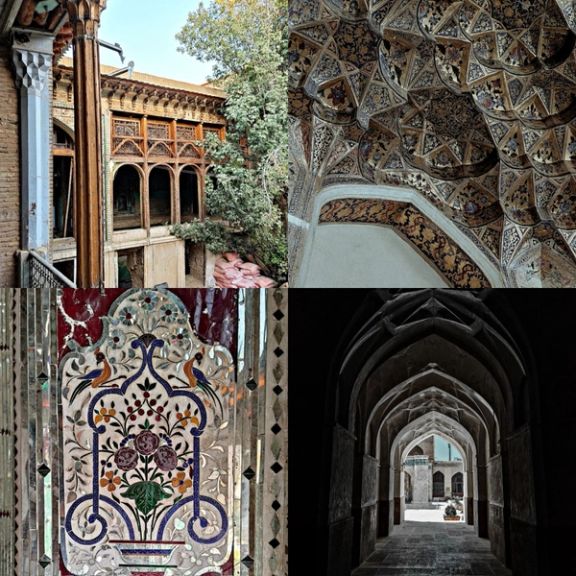
Shah-e-Cheragh is a mosque and the mausoleum of two of the brothers of the eighth Shia imam, Imam Reza, who is himself buried in the northeastern city of Mashhad. The tombs turned into a pilgrimage site in the 14th century when a mosque and theological school were built in their vicinity.
Imam Reza’s shrine has several times been expanded during the Pahlavi era and after the Islamic Revolution and many of the historic neighborhoods around it have vanished. Much of the surrounding neighbourhoods of Shah-e Cheragh have likewise been demolished in the past few decades, as late as four years ago, to build connecting roads and facilities to serve pilgrims.
Shiraz is one of Iran's most popular tourist sites for foreign tourists and Iranians alike. Pasargade and Persepolis, about 60 km to the north of Shiraz, which date back to the Achaemenid period (559 BC-330 BC), and the tombs of two of Iran's most famous poets, Hafez Shirazi (1325–1390) and Saadi Shirazi (1210 – 1291) are among the city’s most visited sites.
